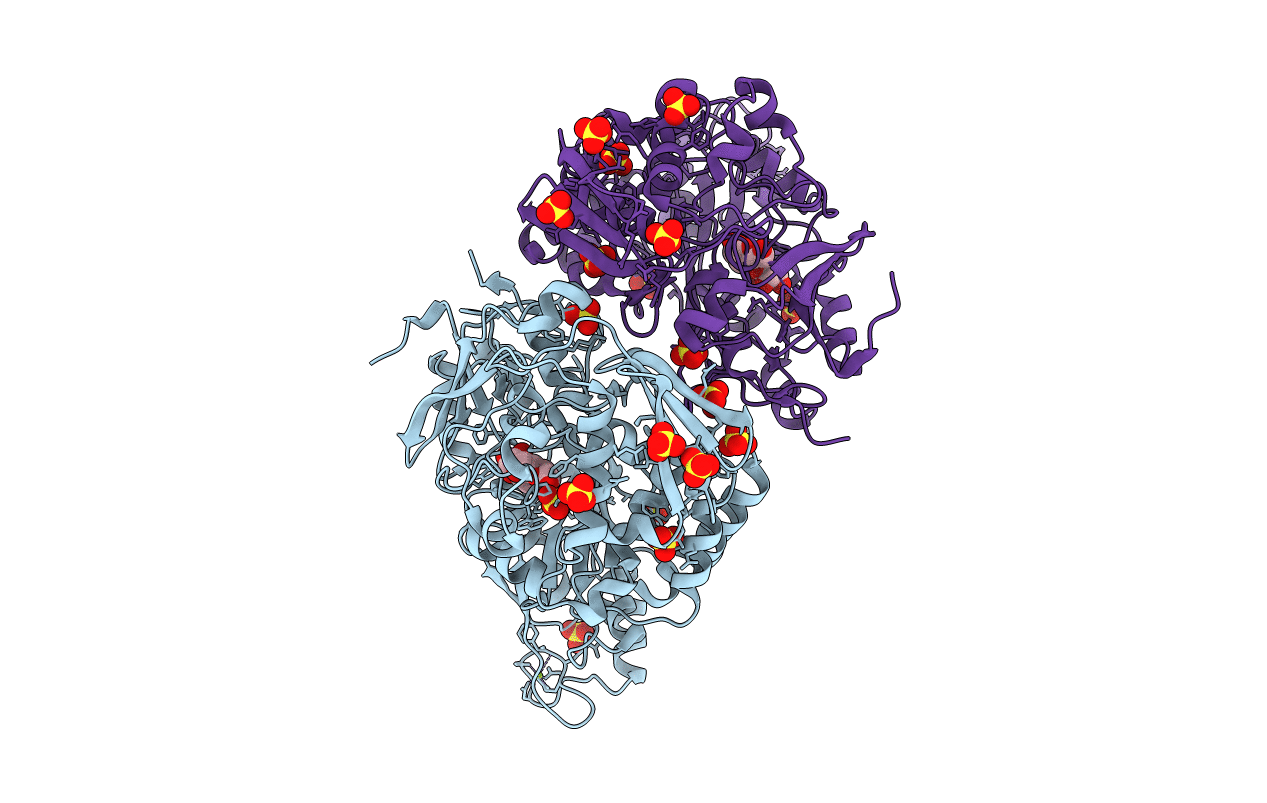
Deposition Date
2014-04-30
Release Date
2014-09-17
Last Version Date
2023-12-27
Entry Detail
PDB ID:
4PFU
Keywords:
Title:
Crystal structure of mannobiose bound oligopeptide ABC transporter, periplasmic oligopeptide-binding protein (TM1226) from THERMOTOGA MARITIMA at 2.05 A resolution
Biological Source:
Source Organism:
Thermotoga maritima (Taxon ID: 243274)
Host Organism:
Method Details:
Experimental Method:
Resolution:
2.05 Å
R-Value Free:
0.20
R-Value Work:
0.17
R-Value Observed:
0.17
Space Group:
C 2 2 21


